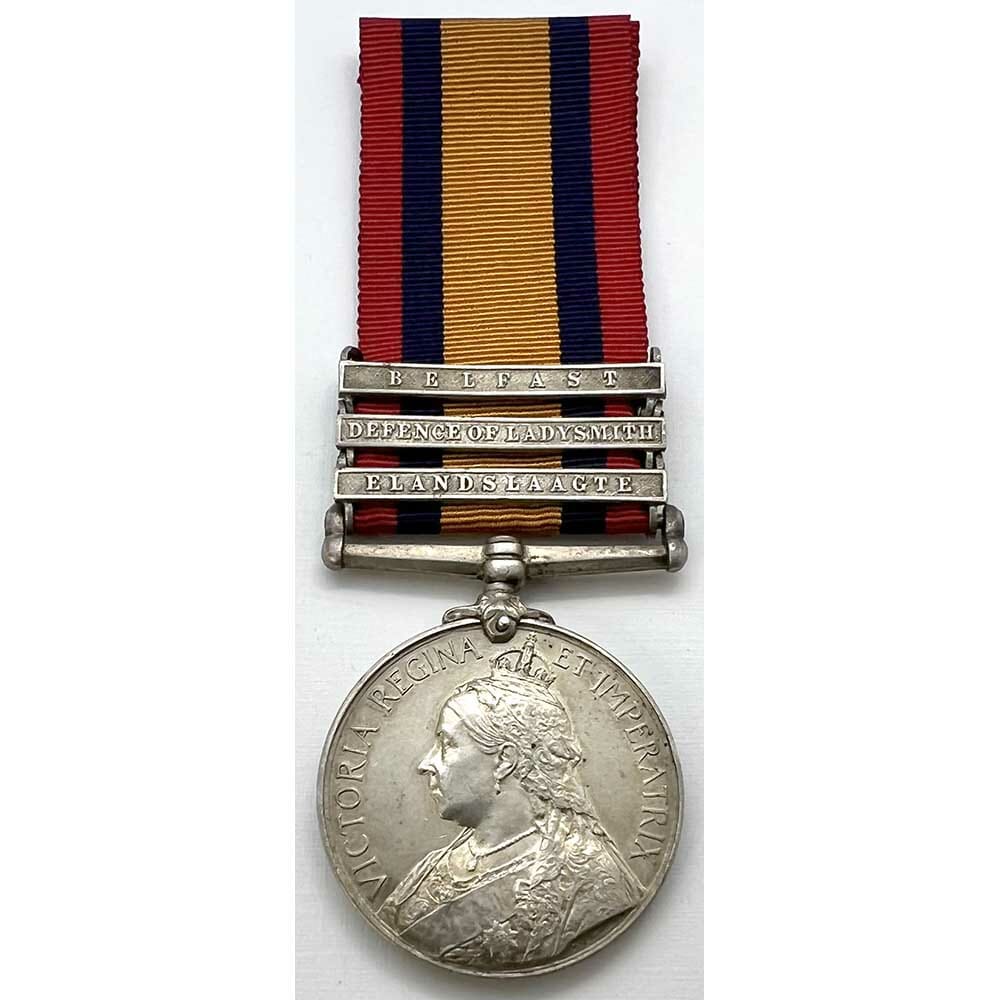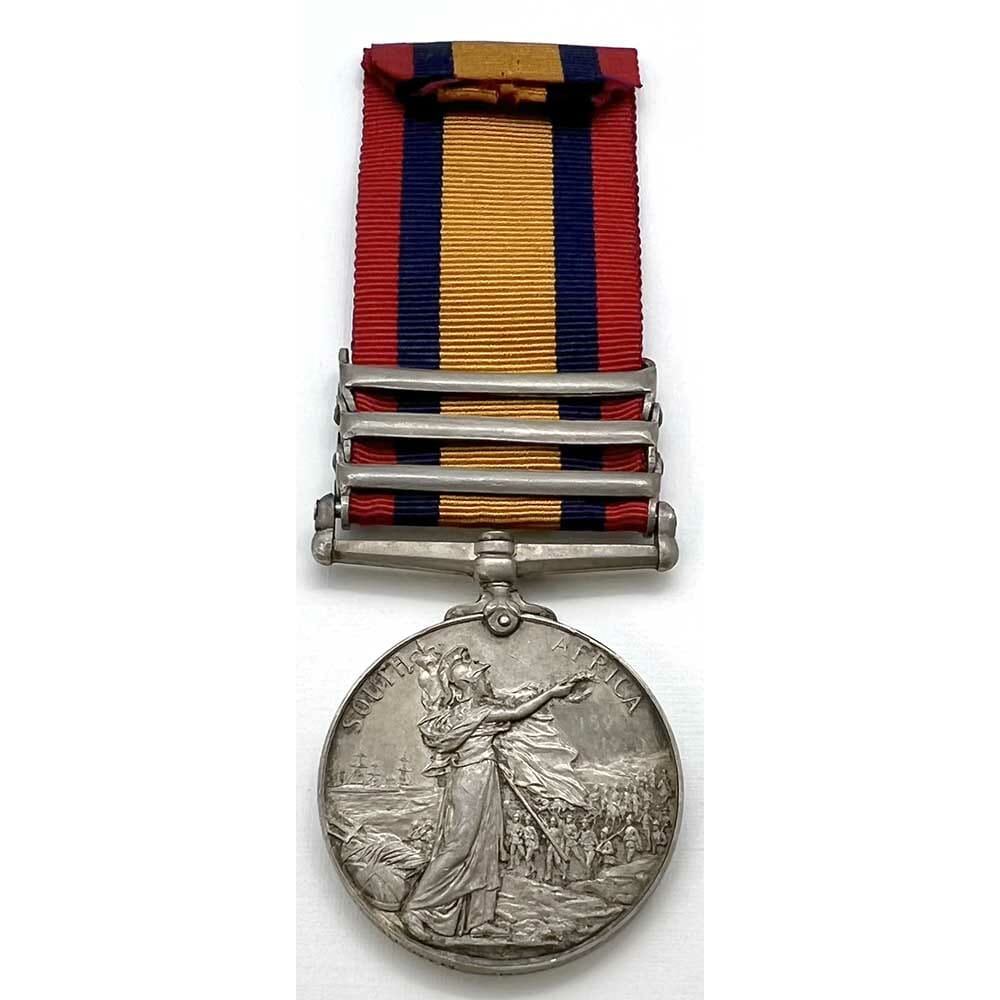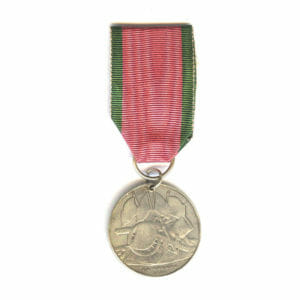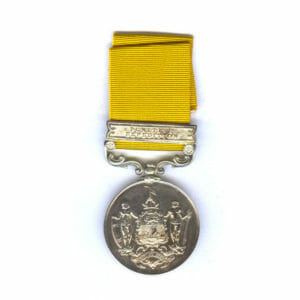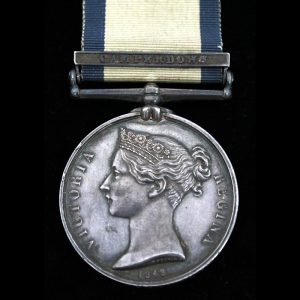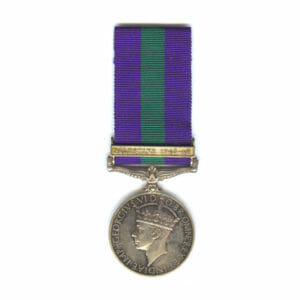Description
Queen’s South Africa Medal, 3 bars, Elandslaagte, Defence of Ladysmith, Belfast, 5339 Private John Trustman, 1st Battalion Manchester Regiment.
Officially impressed: “5339 Pte J. Trustman, Manchester Regt”
John Trustman was born in St Marys, Newton Heath, Lancashire circa 1875.
Having worked as a Labourer and being a member of the 3rd Battalion Manchester Regiment of Militia, he attested for full time service on 16th November 1897 at Ashton under Lyne.
He was posted to 1st Battalion Manchesters on 12th March 1898 and was sent for service overseas in Gibraltar.
On 23rd August 1899 the Regiment was sent from Gibraltar to land in South Africa at the beginning of the war to take part in some of the earliest battles.
He took part in the Battles of Elandslaagte on 21st October 1899, a rare early British Victory, where the Manchester alongside the Gordon Highlanders were pushed back by the Boers, to be inspired by a Bugler from the Manchester and a Pipe Major of the Gordons to press back and charge the enemy once more, this forced the Boers to retreat.
Straight after Elandslaagte the Manchester would become besieged in Ladysmith, they had fought an action on the 30th October 1899, but the British forces were then forced into a retreat and were then trapped in the town until late February 1900 when the relief column finally freed them.
His final battle to earn a clasp was the Battle of Bergendal, also known as Belfast or Battle of Dalmanutha which was an extensive battle spanning from 21st to 27th August 1900.
He remained on service in South Africa until he was sent home, arriving back on 7th January 1902.
He was admitted into Netley Military Hospital and discharged there on 25th February 1902.
He was found to be medically unfit for further service, not allowed to sign his own name on his papers, it instead reads “Insane”.
Returning back home to Failsworth in Manchester, he still lived a long life, until age 77, he died on 18th September 1950 living at Newholme on Nell Lane (later Withington Hospital), his occupation was unusually shown as “Formerly a Grave Digger”.
The 1939 Census shows him as an inmate at Humphrey Hospital, Oldham Road, Failsworth, Manchester.
